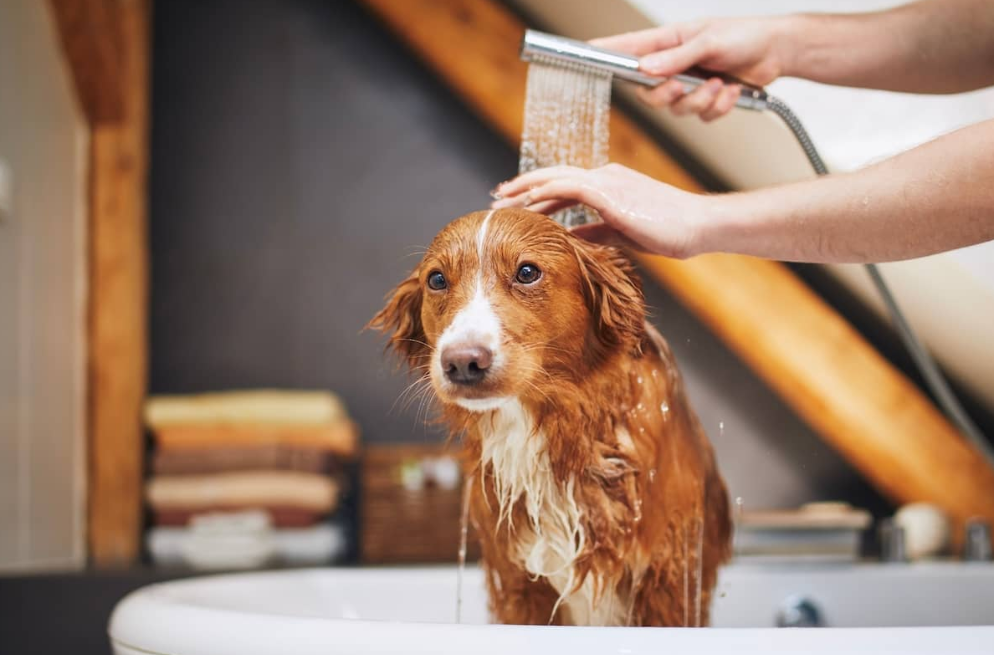For some dogs, the mere thought of bath time can evoke fear and resistance. The confinement of the tub and the sound of running water can be overwhelming. However, with patience, training, and gentle handling, you can help your pet become more comfortable with baths, ensuring a happier and fresher-smelling companion.

Understanding Why Dogs Dislike Baths
While not all dogs dread baths, many do for various reasons:
- Negative Experiences: Dogs may associate baths with past negative encounters, such as being splashed or water accidentally entering their ears.
- Lack of Water Training: Properly introducing puppies and young dogs to water in a positive manner is essential for their comfort.
- Pre-existing Quirks: Some dogs may have inherited or developed a fear of water, which can be overcome with patient training.
Andy Ellis, an expert at Posh.co.uk, emphasizes the importance of bathing for dogs’ hygiene and health:
“Training dogs to get used to the bath is a challenging commitment but is extremely important to fulfil. Bathing is really important for dogs to help prevent nasty odours and bugs from latching onto their fur.”
Tips for Helping Your Dog Adapt to Bathing
Here are some strategies to ease your dog’s bath-time anxiety:
- Use Warm Water: Ensure the water temperature is comfortable for your dog, similar to testing water for a baby. Monitor the temperature throughout the bath to prevent discomfort or injury.
- Use Cups for Water Pouring: Some dogs are intimidated by the flow of water from a shower. Use a cup or bottle to gently pour water over your dog’s body while reassuring them with gentle strokes.
- Reward Good Behavior: Offer treats when your dog exhibits calm behavior during bath time. This positive reinforcement helps them associate baths with positive experiences.
- Establish Regular Routines: Incorporate baths into your dog’s routine whenever they become dirty or smelly. Consistency helps them acclimate to baths over time.
- Play Relaxing Music: Soothing music can help calm your dog’s nerves during baths. Choose soft tunes or nature sounds to create a relaxing atmosphere.
- Use Non-Slip Mats: Place a non-slip mat in the tub to provide your dog with stability and prevent slipping. This can alleviate their fear of falling and make bath time more comfortable.
- Provide Distractions: Use distractions such as bubbles, lick mats with peanut butter, or bath-friendly toys to keep your dog occupied and engaged during baths. These distractions can help alleviate their anxiety and make bath time more enjoyable.
By implementing these tips and techniques, you can help your reluctant dog overcome their fear of baths, ensuring a more pleasant bathing experience for both of you. With patience and consistency, your furry friend can learn to embrace bath time as a positive and refreshing part of their routine.
